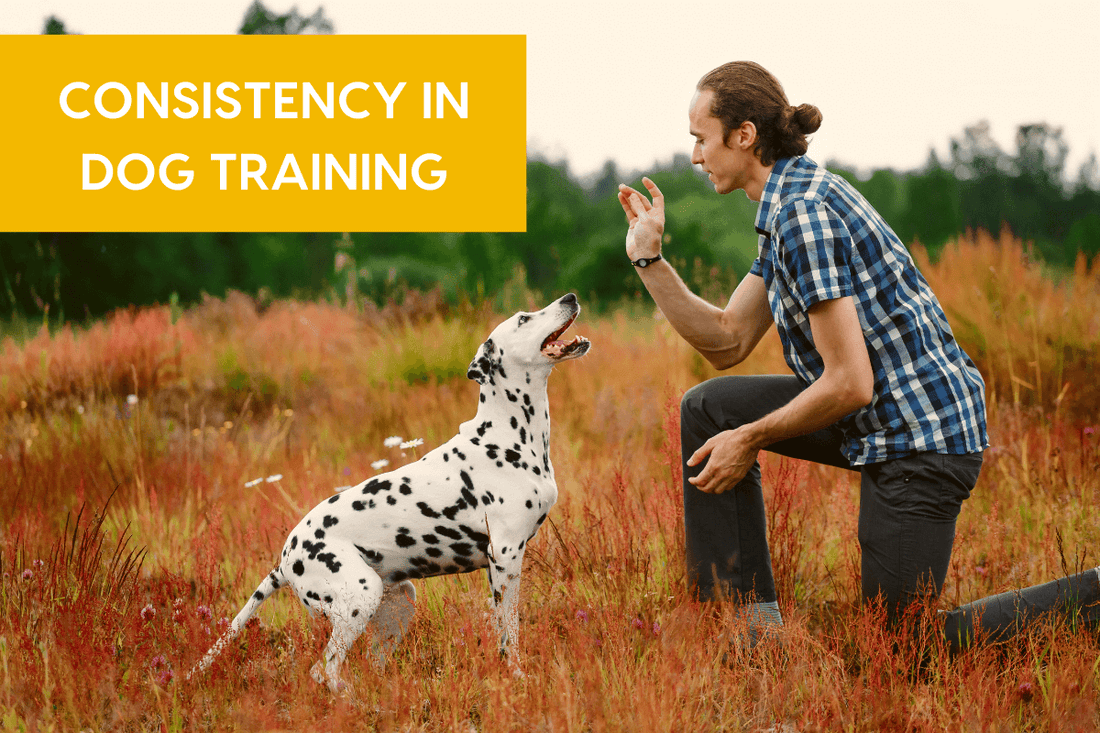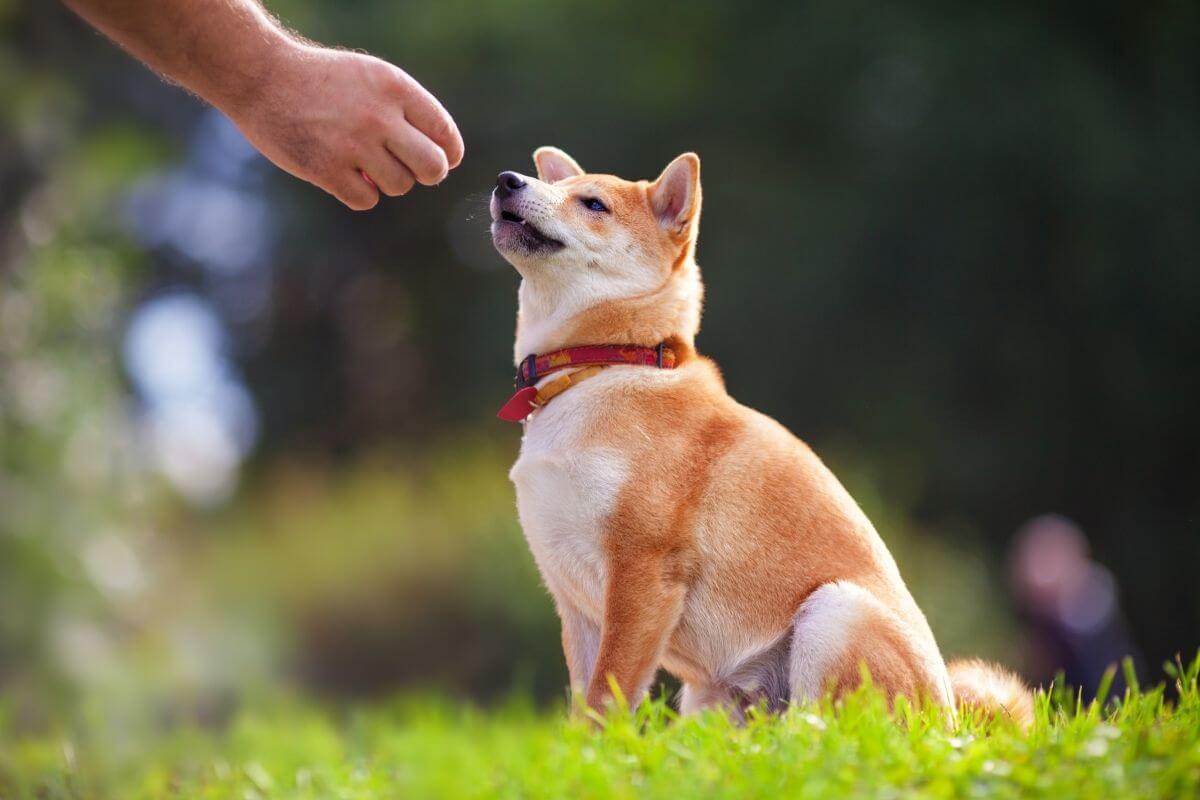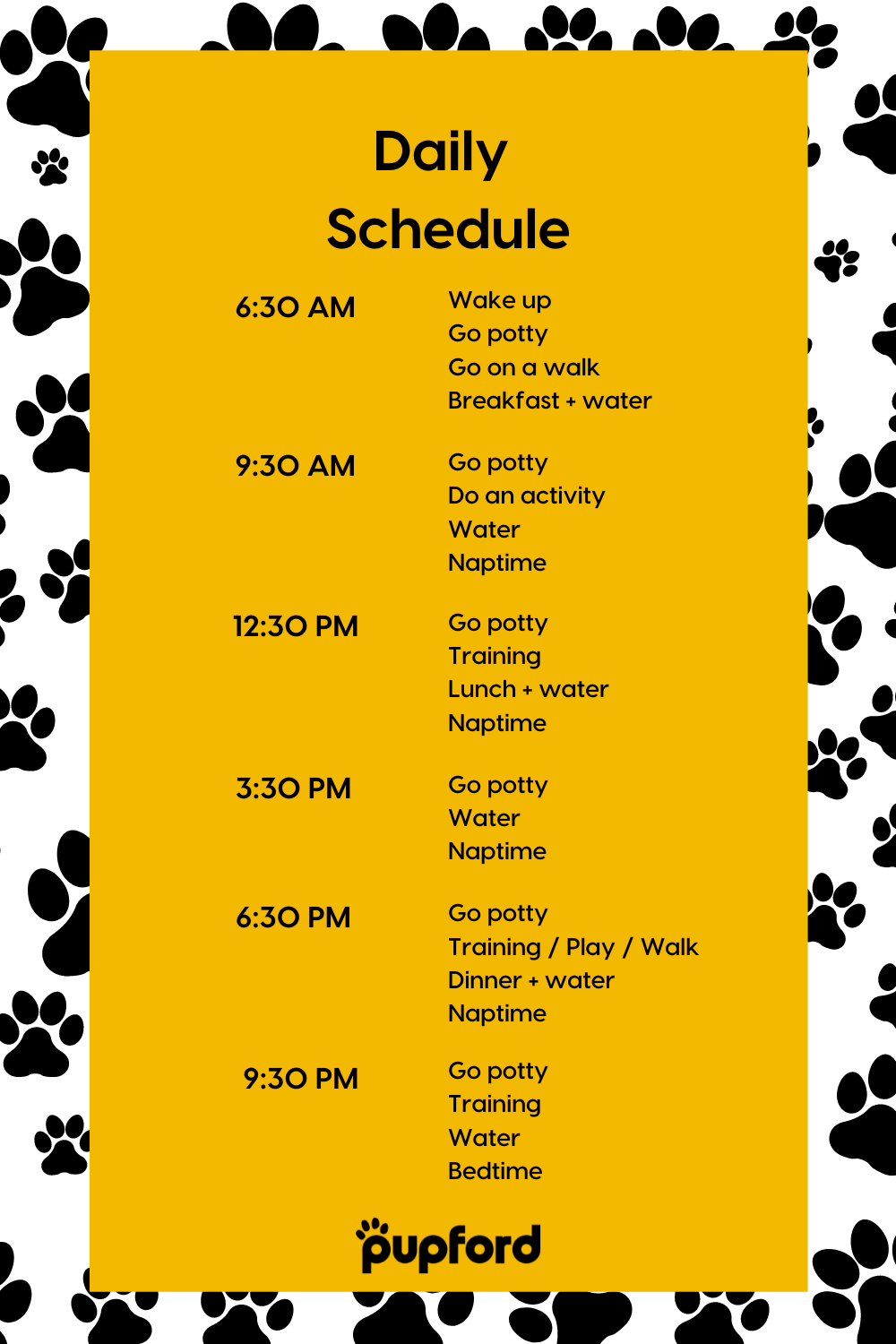Consistency in Dog Training and Making the Time | Pupford
7 Comments Filed under pup parenting+ training
When we talk to our new pup parents to see how things are going with their new dog, a response we often get is “Great… but they’re not picking up behaviors in training as quickly as I thought they would.”
To which we follow up “well, how consistent is training?” because that’s usually where we find out all we need to know.
Listen, we get it. Life is busy, and odds are you have other little ones to keep an eye on other than just your new dog -- but making the time to train your dog consistently should be a top priority.
And speaking of your other family members, another part of consistent dog training is making sure everyone is on the same page about how to train your dog. Imagine having two teachers: one tells you that a certain number symbol means “one,” but another teacher tells you it means “apple.” The next day, you’re given a test with that symbol in it -- will you know what to do?
The same principles apply to dog training, which is why consistency is key. We’re going to dive a little deeper into that today to help new dog parents train more effectively! Some things we’re going to cover are:
The relevance of consistency in dog training
How to get reliable dog behavior
The importance of setting a schedule
Making training a priority
But before you jump in, take our quiz to see where your training consistency stacks up.
THE RELEVANCE OF CONSISTENCY IN DOG TRAINING
We can’t stress this enough -- consistency should be the number one priority in dog training. It really is the only way to get the training results you’re looking for, since learning is all about your dog identifying patterns and forming them into memory.
There’s more to training consistency than just the number of sessions per week (although it’s important to keep those up too). Here are some other ways to stay consistent during training:
- Using cues. Both verbal and non-verbal cues should remain consistent during training. That means selecting one word or gesture for a skill and giving that cue the same way every time. For example, if you use “come” for recall, be mindful not to say “come here” other times.
- Timing. The more precisely we mark/reward our dog’s correct behaviors, the quicker they learn what’s right. Learn more about timing in dog training in this article.
- Setting house rules. If you’re trying to train your dog to not counter surf, it’s important that every member of the house is enforcing that rule. If different family members are rewarding different behaviors, how is your dog supposed to know what’s right?
- Keeping rituals. Setting certain times for feeding, walks, bathroom breaks, and more will help your dog learn a routine, making it easier for them to control unwanted behaviors like having accidents or begging for food at odd times.
- Revisiting the basics. Different environments and different stages of life can hinder the performance of previously-taught behaviors. Every time you train in a new situation, be sure to run through the basic cues to make sure your dog can perform them regardless of the environment.
Related Reading: How Long It Really Takes to Train a Puppy
HOW TO GET RELIABLE DOG BEHAVIOR

After all, isn’t that the goal of training your dog? To get reliable behavior that keeps them safe and happy (and to show just how good of a boy or girl they are, of course!).
Getting reliable behavior from your dog takes a lot of work and, you guessed it, consistency. Here are some quick tips for making your training sessions more effective and getting reliable results:
- Break training into shorter sessions of about 15 minutes, where you focus on one key behavior. It’s better to do multiple short sessions per day than one long one to keep your dog on task and focused. Remember, it’s not about how long a session is, it’s about how effective it is.
- Make sure every family member uses the same cues, gestures, timing, and tones and all takes a turn leading a training session so your dog responds equally to all family members.
- Train in different environments so your dog knows that cues mean the same thing no matter where they are.
- Gradually increase distractions throughout training sessions to get your dog used to doing their behavior even when more exciting things are going on.
- Reward consistently with low calorie, high-value training treats.
Need help with getting on a consistent training schedule? The Pupford Academy is full of resources and training courses that can help your dog learn anything from basic behaviors to how to be home alone -- and so much more!
THE IMPORTANCE OF SETTING A SCHEDULE
When we talk to pup parents in our community that struggle with training consistency, the most common reason they give us is that they don’t have time. We know that life can get crazy and busy, so scheduling your dog’s activities can help make sure training gets done.
The good news is that training is most effective when done in short spurts, so it’s easier to fit into a busy schedule. Setting a schedule also helps keep your pup on track with feeding, walks, bathroom breaks, and their favorite, nap time.
When making a schedule, include all the key activities of your dog’s day: when they eat, when they go for walks, when they get any medications or supplements, and when they have their one to two 5-15-minute training sessions per day.
Make sure that the schedule is written out (or typed up, we know it’s 2020), and is visible to all members of the family. Having a schedule is great and all, but making sure everyone follows it is what leads to consistency. Here’s a sample puppy schedule you can work off of:

MAKING TRAINING A PRIORITY
In all areas of life, you have to make time for what’s important. Training should be a priority for you and your new dog. Plus, it gives your new pup a great opportunity to bond with the different members of your family while they learn the house rules.
While it’s never too late to start making training a priority, the sooner you do so the sooner your dog will master their new behaviors -- and the sooner you can expect reliable, consistent responses from your pup!
Have any tips for prioritizing training or keeping up consistency? Let us know in the comments below!

7 comments
Leave a CommentI am home with my 11 month old male neutered zRottie. I use short bursts of training all day. When my husband comes home from work he begins to nip at him and feisty. He is calm all day, gets lots of e exercise. Would like to know how to deal with this. He behaves for me but not for him. Any suggestions s?
My spayed female Pembroke Welsh Corgi, Gucci and I have somewhat of a routine. Gucci is 15 months old. When I wake up, the first thing I do is take her out of her crate. She must be quiet, automatic watch me, before I open her crate door. I cue her to sit, grab her collar and fasten her leash, click and treat. I continue to work on automatic focus in different locations as we go to the back door. Automatic focus, wait, automatic focus before I open the door. Automatic focus, open the door, automatic focus before I cue “Free”. Since she attempts to eat feces, I go out with her “leave it” cover with my shoe. Continue automatic focus. I try to scoop up the the poop, but with several inches of snow it can be difficult. She doesn’t eat from a bowl, Kongs, hunting for it, other treat dispensing toys, snuffle mat, etc. It doesn’t take her long to eat, 5 minutes. The snow is preventing us to go on walks. Gucci will find a ball and bring it to my mom and I for fetch or monkey in middle. When she needs to go potty, she runs around the house. I just know. When she gets overbearing, I’m learning that it’s naptime. I feel like I’m training her constantly. Sometimes I click and treat, others times I pet her. My mom and I live together. My mom’s 92 years old, legally deaf with a cochlear implant and my disability affects my voice, speech, and swallowing. We need to learn how to look at each other, enunciate, and use our indoor voices because Gucci acute hearing causes her to get excited, jump up, grab, tear, and nip at my clothes. I’m beginning to prioritize Gucci’s training more after court related issues that have somewhat resolved with my husband’s critical health issues in Ohio. Gucci’s very intelligent and hasn’t forgotten what she’s learned! We have a life time ahead of us with learning different activities, agility, freestyle, and herding games. I’ve enrolled in all of your academy courses.